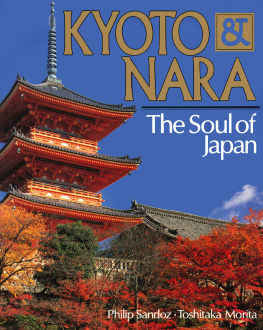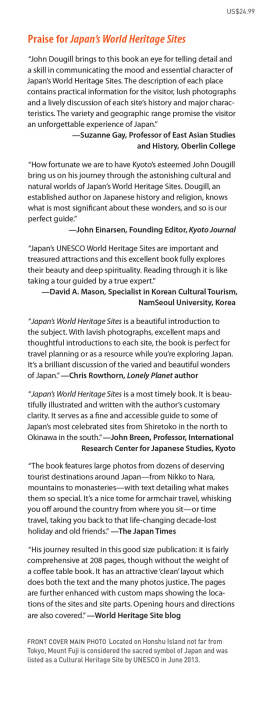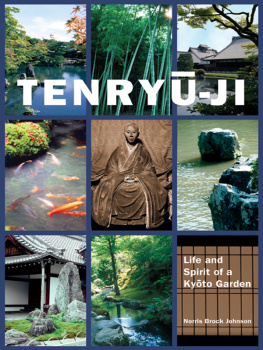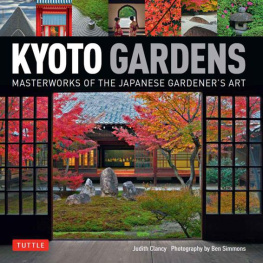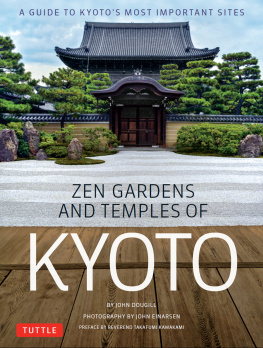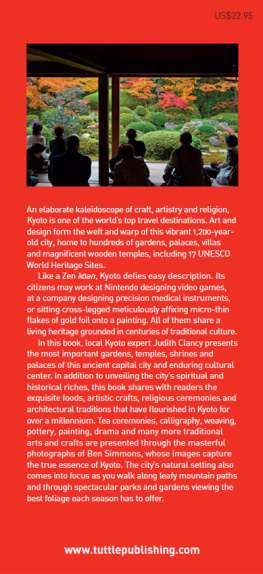General Information
Each of the sites described within this guidebook lists the hours at which the site is open and whether there is an entry fee. In general, most temples charge a small entry fee to cover the upkeep of buildings and grounds. Shrines, on the other hand, usually do not charge for entrance. Entry fees have not been indicated since they vary. Imperial palaces and villas (the Old Imperial Palace, the Shugaku-in Villa and the Katsura Villa) do not charge a fee, but you must register in advance for permission to visit these sites see below. Virtually all museums, private villas and gardens charge an entry fee.
THE OLD IMPERIAL PALACE, THE SHUGAKU-IN AND KATSURA VILLA
These three imperial sites require registration in advance for entry to their grounds. Registration takes place at the Imperial Household Agency office on the grounds of the Old Imperial Palace just south of Imadegawa-dori to the east of Karasuma-dori. You should bring along your passport for identification purposes. The office is closed on Saturday afternoons, all day Sunday, on national holidays and from December 25 through January 5.
Permission for the tour of the palace grounds can frequently take place the same day, such tours being offered at 9:00, 11:00, 13:30 and 15:00. The grounds of the palace can be visited, but not the interior of the buildings. A separate reservation must be made for the Sento Gosho (the retired emperors palace), where the lovely grounds and stroll garden remain, even though the original palace structures have been destroyed by fire. This tour is at 11:00 and 13:30 and is in Japanese only.
WEEKENDS AND HOLIDAYS IN KYOTO
Kyoto is a popular venue for the Japanese as well as for tourists. Thus, on weekends and national holidays, all sites can be very crowded. Food facilities can be strained at meal times, and therefore it might be well to purchase a boxed lunch such as those sold in the Central Railway Station.
National holidays occur on 13 occasions throughout the year, and on these days banks and public offices are closed. If a national holiday falls on a Sunday, the next day is marked as the holiday. Golden Week (April 29 to May 5) is a period when all Japan seems to be traveling, and advance reservations for hotels, trains and public events are essential during this week.
The national holidays occur on:
January 1, January 15, February 11, March 21, April 29, May 3, May 5, September 15, September 23, October 10, November 3, November 23 and December 23.
The Obon period of August 13 to 16 also sees heavy travel. Many public venues (museums, etc.) are closed from approximately December 25 through January 5.
KYOTO TOURIST INFORMATION
The Japan National Tourist Office in the Kyoto Tower Building to the north of the Central Station Plaza on Karasuma-dori can answer questions as to any of the sites in the Kyoto area. Maps, brochures and other information can be readily and cheerfully obtained without charge.
The Japan Travel Bureau, as well as other travel agencies in the buildings around the Central Railway Plaza, can assist with reservations.
MONEY EXCHANGE
Travelers checks and foreign currency are most easily exchanged at banks. As a courtesy, some of the major department stores, such as Hankyu and Takashimaya, will also exchange travelers checks for , and most tourist hotels are able to cash travelers checks as well.
Getting to Kyoto
RAIL LINES
The Japan Rail Pass is valid on the Japan Rail Line but not on the other private lines mentioned below. Most rail lines have automatic ticket machines and these tickets must be placed in the turnstile, reclaimed and then finally deposited in the turnstile at the exit. Tickets are also available at ticket offices in the stations if you do not have the correct change for the ticket machine. Long journeys usually require a regular rather than a machine ticket.
Japan Rail Japan Rail trains from Kyoto Station run in all directions to the north, south, east and west. Various lines emanate from the station, including local and regular express trains as well as the Shinkansen line. Tickets can be purchased from machines or from the ticket office in the station (language can sometimes be a problem at such offices).
Kintetsu (Kinki Nippon) Line The Kintetsu Line to Nara has its main entrance on the southwest side of Kyoto Station. Here, trains can be taken to areas in the southern part of Kyoto as well as on to Nara or further south to the Asuka region and to Yoshino. Tickets can be purchased from machines at each station or from the ticket office.
Hankyu Rail Line The Hankyu Rail Line begins as a subway under Shijo-dori in Kyoto at Kawaramachi-dori. It runs to Katsura (change for Matsuo and Arashiyama) and on to Osaka. For stations within the general Kyoto area, be certain to take a local and not an express train as you may miss stops.
Keihan Rail Line The Keihan Rail Line, in a sense, connects three rail lines:
The main line operates from its underground (subway) Imade-gawa-dori station terminal on the east side of the Kamogawa River and goes south to Uji or Osaka.
The Eizan Railway operates from the Demachi Yanagi station at Imadegawa-dori (just above the Keihan subway station of its Osaka or Uji line) to Kurama or to Yase.
The Keihan Rail Line runs on the east side of the Kamo-gawa River, becoming a subway north from Tofuku-ji station to the terminus at Imadegawa-dori just below the Demachi Yanagi surface station to Yase or Kurama to the north. To the south, the Keihan Rail Line serves stations in south Kyoto and Uji as well as providing access to Osaka and stations in between.
Keifuku Rail Line The Keifuku Rail Line serves the western part of Kyoto. One terminal is at the Shijo Omiya-dori intersection from where it departs for Arashiyama. Another terminal for its Kitario Line is at the Nishioji Imadegawa-dori intersection. The Kitano Line runs west to its junction with the Arashiyama Line where one is able to change to an Arishiyama train. These two lines run along the surface, sometimes on city streets.
Kyoto Subway The efficient subway system runs due northsouth through Kyoto from the Kokusai Kaikan station at the Kyoto International Conference Hall in the north to the Takeda station in the south. Some trains run through to Nara via the subway system and these trains continue on beyond Takeda station. The Tozai subway line runs from the Nijo Station on west Oike-dori to the Keage station on eastern Sanjo-dori to the south and to the Daigo-ji Temple complex. Tickets are purchased from vending machines at subway entrances, and these tickets are placed in the turnstile at the entrance and then at the exit at ones destination, as described above.
BUS LINES
Kyoto is well served by efficient bus lines that cover all of the major areas of the city as well as locations beyond the city itself. Most lines begin from the bus plaza in front of Kyoto Station, while some begin at the Keihan Sanjo station on the east side of the Kamo-gawa River. One enters a bus from the rear and, within the city, pays the set fare that is listed at the front of the bus. Buses are exited from the front where the fare is paid to the driver. A machine behind the driver makes change.
For buses going beyond the city center, one takes a ticket from the machine at the rear entry to the bus. An electric board above the driver indicates the number on the ticket (the point at which one entered the bus) and the fare at the point at which the bus arrived. One exits through the door at the front, paying the driver the appropriate fare on leaving.
Long-distance buses also leave from the terminal in front of Kyoto Station.
Buses are numbered with one or two digits. Three-digit number buses are loop buses within the city of Kyoto, while two-digit buses start at either Kyoto Station or Keihan Sanjo station.


